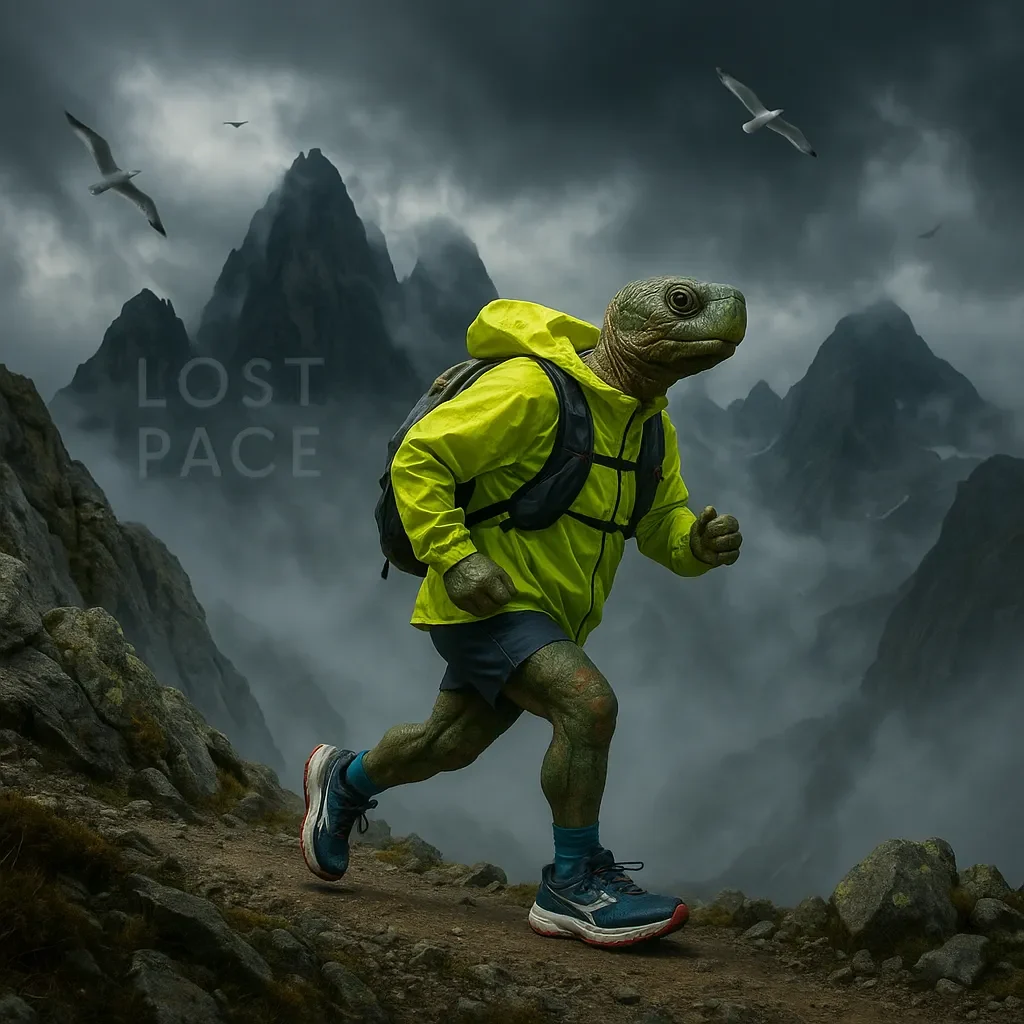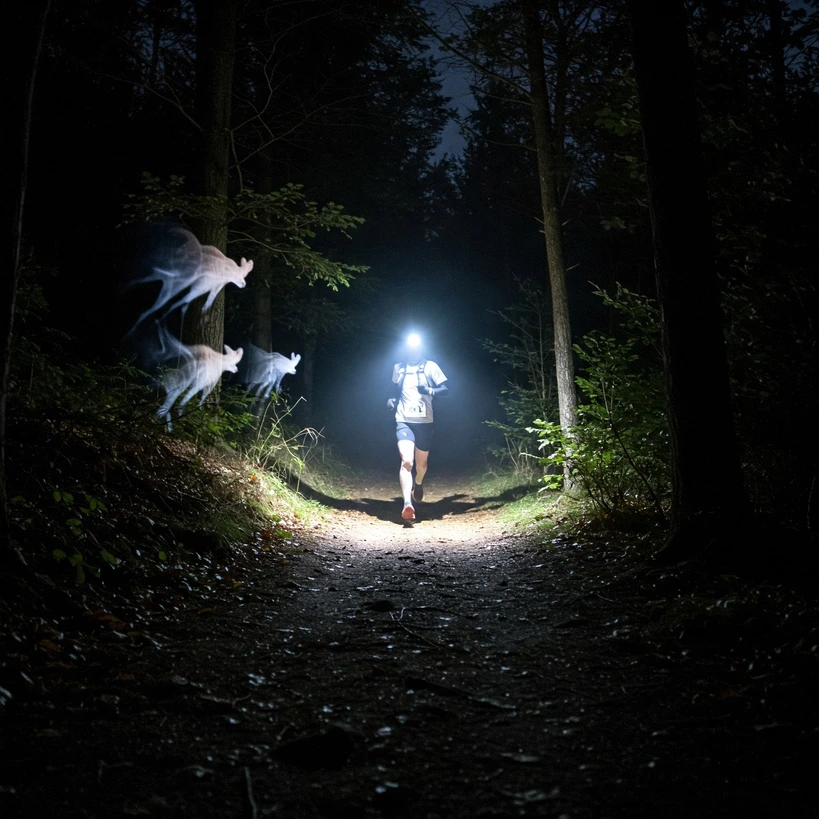Demons in the Dark? Managing Hallucinations (Sleep Monsters) During Your Backyard Ultra
As you push deeper and deeper into the relentless cycle of a Backyard Ultra, often battling extreme fatigue after 24, 48, or even more hours, you might encounter one of ultra-endurance running’s strangest phenomena: hallucinations. Often affectionately (or nervously) termed “sleep monsters,” these sensory perceptions without actual external stimuli can range from mildly amusing to genuinely disorienting. Understanding managing hallucinations backyard ultra, style is a key part of advanced Backyard ultra mental preparation,, particularly closely linked to Coping with sleep deprivation backyard ultra,.
This guide aims to demystify these experiences, explain why they happen, and offer practical sleep monsters ultra running coping, strategies to help you navigate them safely and calmly if they arise during your race.
Why Do Hallucinations Happen in Ultras?
Seeing things that aren’t there during extreme endurance events isn’t typically a sign of mental illness; it’s usually a physiological response to several factors combining:
- Severe Sleep Deprivation: This is the primary driver. As the brain becomes profoundly fatigued from lack of sleep, its ability to process sensory input correctly diminishes. It starts misinterpreting signals or filling in gaps with “imagined” stimuli.
- Sensory Monotony/Deprivation: Running the same loop (Dealing with monotony backyard ultra,) for hours, especially in the low-light conditions of night, reduces the amount of varied, real sensory input the brain receives. This can make it more prone to generating its own internal “noise.”
- Physical Exhaustion: Overall bodily fatigue contributes to reduced cognitive function.
- Possible Contributing Factors: Dehydration (Backyard ultra hydration strategy,) or low blood sugar (Backyard ultra nutrition plan,) can sometimes exacerbate cognitive issues, potentially worsening hallucinatory effects.
Common Types of BYU Hallucinations (“Sleep Monsters”)
Experiences vary wildly, but common reports include:
- Visual: Seeing animals (real or fantastical) on the trail, people standing among trees, objects morphing or moving (like rocks seeming to breathe or trees waving), intricate patterns appearing on surfaces, flashing lights.
- Auditory: Hearing voices, music, or specific sounds that aren’t actually present.
- Tactile (Less Common): Feeling things crawling on the skin.
These hallucinations are often fleeting and may seem obviously unreal, but sometimes they can be quite vivid and momentarily convincing.
Strategies for Managing Hallucinations During a Backyard Ultra
The absolute key is to remain calm and rational.
1. Don’t Panic: Recognize that this is a relatively common side effect of extreme endurance and fatigue. Panicking wastes precious mental energy and can increase disorientation. Breathe deeply. 2. Acknowledge, Don’t Engage: Notice the hallucination (“Okay, my brain is tired and showing me a gnome sitting on that log”). Acknowledge its presence internally but resist the urge to interact with it, talk to it, or analyze it deeply. It’s usually just noise from a tired brain. 3. Perform Reality Checks: * Internal: Ask yourself: “Does this logically make sense in this environment? Is it probable?” * External (Crucial): If you’re unsure or the hallucination feels persistent or concerning, calmly mention it to your crew at the next transition. Phrase it simply: “Hey, I thought I saw [X] out there, did you notice anything unusual?” Your crew’s grounding in reality is vital. Good Effective communication with your backyard ultra crew, is key. 4. Focus on Tangible Reality: Actively ground yourself in what you know is real. Focus intently on: * The beam of your headlamp on the trail directly ahead. * The physical sensation of your feet hitting the ground. * The rhythm of your breathing. * The actual, verified course markings. * The immediate task: completing the current loop safely. 5. Utilize Your Mental Toolkit: Deploy other practiced coping mechanisms: * Instructional Self-Talk: Guide yourself: “Focus on the trail,” “Keep moving forward,” “Check footing now.” See Positive self-talk examples backyard ultra,. * Mantras: Repeat a grounding or focusing mantra: “Stay present,” “Calm and steady.” See Using mantras during a backyard ultra,. * Mindfulness: Briefly tune into real sensory details – the feel of the air, the sound of the wind. See Mindfulness acceptance,. 6. Maintain Fueling & Hydration: While not a direct cause, being depleted can worsen cognitive function. Stick rigorously to your nutrition and hydration plan. 7. Increase Real Sensory Input (Temporarily): Sometimes, slightly increasing headlamp brightness, briefly chatting with crew during a transition, or changing music/podcast (if using) can provide enough novel, real input to temporarily disrupt or lessen hallucinations.
When Hallucinations Become a Safety Concern
While most “sleep monsters” are benign, prioritize safety above all else (Backyard ultra health recovery,):
- Distressing or Terrifying Hallucinations: If the experiences become overwhelmingly frightening or cause significant emotional distress, it impacts your ability to cope.
- Impairing Navigation/Safety: If hallucinations make it difficult to follow the course, identify hazards, or run safely (e.g., swerving excessively).
- Combined with Severe Disorientation: If hallucinations are accompanied by significant confusion about where you are, what you’re doing, or an inability to make basic decisions.
In these situations, stop at the next transition, inform your crew and race medical staff immediately. Continuing could be dangerous. Your well-being is more important than finishing another loop.
Conclusion: Demystifying the Sleep Monsters
Hallucinations, or “sleep monsters,” can be an unsettling but often manageable part of the deep ultra-endurance experience, particularly in multi-day Backyard Ultras where Coping with sleep deprivation backyard ultra, is extreme. The key lies in understanding they are usually physiological responses to fatigue, not signs of losing your mind. By preparing mentally, learning not to panic, acknowledging but not engaging with them, performing reality checks (especially with your crew), focusing on tangible reality, and utilizing your mental coping toolkit (Backyard ultra mental preparation,), most runners can safely navigate these altered perceptions. Remember to always prioritize safety and seek help if hallucinations become distressing or impair your ability to continue safely.

About the Author
Lost Pace is an ultramarathon runner, shoe-tester and the founder of umit.net. Based year-round in Türkiye’s rugged Kaçkar Mountains, he has logged 10,000 + km of technical trail running and completed multiple 50 K–100 K ultras.
Blending mountain grit with data, Lost analyses power (CP 300 W), HRV and nutrition to craft evidence-backed training plans. He has co-written 260 + long-form guides on footwear science, recovery and endurance nutrition, and is a regular beta-tester of AI-driven coaching tools.
When he isn’t chasing PRs or testing midsoles, you’ll find him sharing peer-reviewed research in plain English to help runners train smarter, stay healthier and finish stronger.
Ultrarunner · Data geek · Vegan athlete

